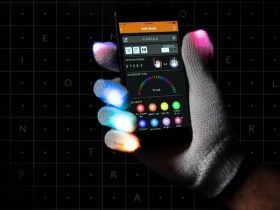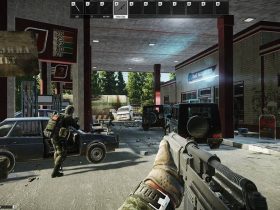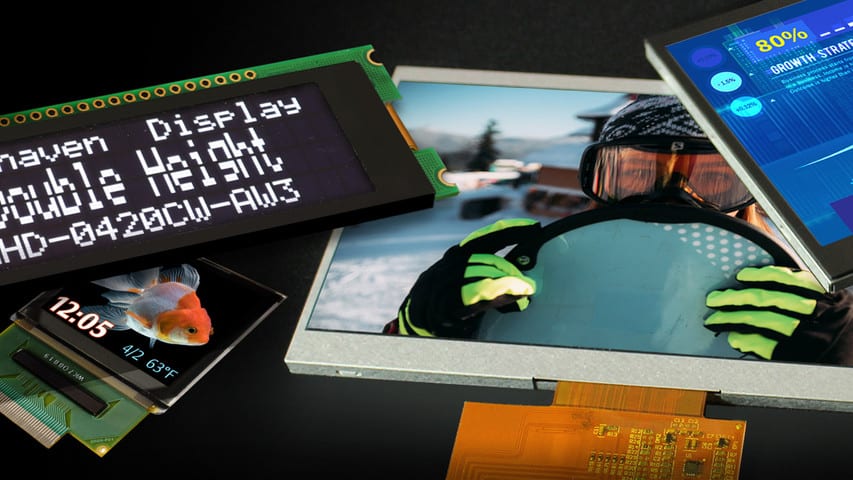Anyone who might not be familiar with the industrial environment, might wonder what we exactly mean by industrial devices. Well, industrial devices are all around us and they can be defined as specialized equipment used in different manufacturing stages in order to automate processes, monitor conditions and control overall machinery. For instance, some types of industrial devices include sensors, data acquisition systems, programmable controllers, industrial robots and many more.
These devices, due to their very specific purpose, require the highest level of precision and reliability. Therefore, the choice of a suitable display can significantly impact performance and functionality. That’s why monochrome LCD screens, with their distinct advantages, have become a staple in various industrial applications. In this guide, we’ll explore what monochrome LCDs are, underscore the importance of high-quality displays in industrial settings, and provide a comprehensive roadmap for selecting the ideal monochrome TFT (Thin-Film Transistor) screen for your industrial equipment.
What are monochrome screens
Monochrome LCDs, or Liquid Crystal Displays, are screens that display images in a single color, typically black and white or shades of gray. Even though some consider this technology a thing of the past, its application is still very versatile and monochrome LCD screens have found their purpose in the technology of today. Unlike color LCDs, monochrome displays are often chosen for their clarity, high contrast ratios, and energy efficiency. These characteristics make them well-suited for applications where readability, precision, and reliability are crucial, such as in industrial devices.
Why good displays are crucial for industrial devices
In the industrial landscape, where efficiency and accuracy are non-negotiable, the role of the display in devices cannot be emphasized enough. That’s why high-quality LCD monochrome displays serve as the interface between the user and the machine, providing critical information in real-time. Here’s why good displays are essential in industrial settings:
Readability under different conditions:
Industrial environments can present challenging conditions, including variations in lighting and temperature. A good display ensures optimal readability under these conditions, allowing operators to access crucial information without any hindrance.
Precision and accuracy:
In certain applications where precision is of the essence, such as measuring instruments or control panels, a high-quality display ensures that information is conveyed accurately. This is especially important for tasks that require fine adjustments and data interpretation.
Reliability at all times:
Industrial devices often operate round the clock to ensure manufacturing progresses at a steady pace. A reliable display is designed to withstand continuous use without compromising performance, contributing to the overall reliability of the equipment.
Ease of integration:
A good display seamlessly integrates into the overall design of the industrial device. It should be customizable to meet specific size and form factor requirements, and monochrome LCD can do just that.
Longevity and durability:
Industrial devices are long-term investments, and components need to withstand the test of time. Displays with robust construction and durability guarantee a longer lifespan for the equipment, reducing the need for frequent replacements.
Choosing a monochrome TFT screen for industrial equipment
Not only is the type of the display important, it’s also crucial to be aware of how to choose the right one and what to have in mind during the process. Selecting the right monochrome TFT screen for industrial equipment involves a thoughtful consideration of various factors. Here’s a step-by-step guide to help you make an informed decision:
Start by clearly defining the specific requirements of your industrial application. Write it down and that way you can easily communicate your needs to the manufacturer.. Consider factors such as the size of the display, resolution, and environmental conditions in which the equipment will operate.
Next, assess the lighting conditions in the industrial setting. Monochrome TFT screens are known for their excellent visibility even in bright or dim environments, making them suitable for a range of lighting conditions.
If your device requires detailed visualization, such as data analysis or monitoring processes, higher resolution and pixel density are crucial. Evaluate the resolution capabilities of the monochrome TFT screen to ensure it meets the demands of your application.
As mentioned, industrial devices often have specific form factor requirements, which naturally affect your display choice. If that’s the case, opt for a monochrome TFT display that offers customization options, allowing you to tailor the screen size and shape to seamlessly integrate into your equipment.
Industrial environments can expose equipment to extreme temperatures and other environmental elements. When choosing the display, make sure it’s robust and durable enough to withstand all of these unpredictable weather conditions.
Additionally, energy efficiency is critical in industrial settings, especially for devices that may run on batteries or require optimal power consumption. Select a monochrome TFT screen that balances performance with energy efficiency.
It’s also necessary to ask yourself if your application requires touchscreen functionality. Some industrial devices benefit from a touchscreen interface, enhancing user interaction. If applicable, choose a monochrome TFT screen with reliable touchscreen technology.
The key takeaways
Industrial devices are an integral part of our lives and although we probably often take them for granted, especially if we have no touchpoints with this industry, it’s important to understand their versatile purpose. And, in order to have those industrial devices functioning seamlessly, the choice of a monochrome TFT screen is a pivotal decision that directly influences efficiency, precision, and user experience.
By understanding the unique requirements of your application and carefully evaluating factors such as readability, resolution, and environmental compatibility, you can select a display that not only meets but exceeds the demands of the industrial landscape.













Leave a Reply